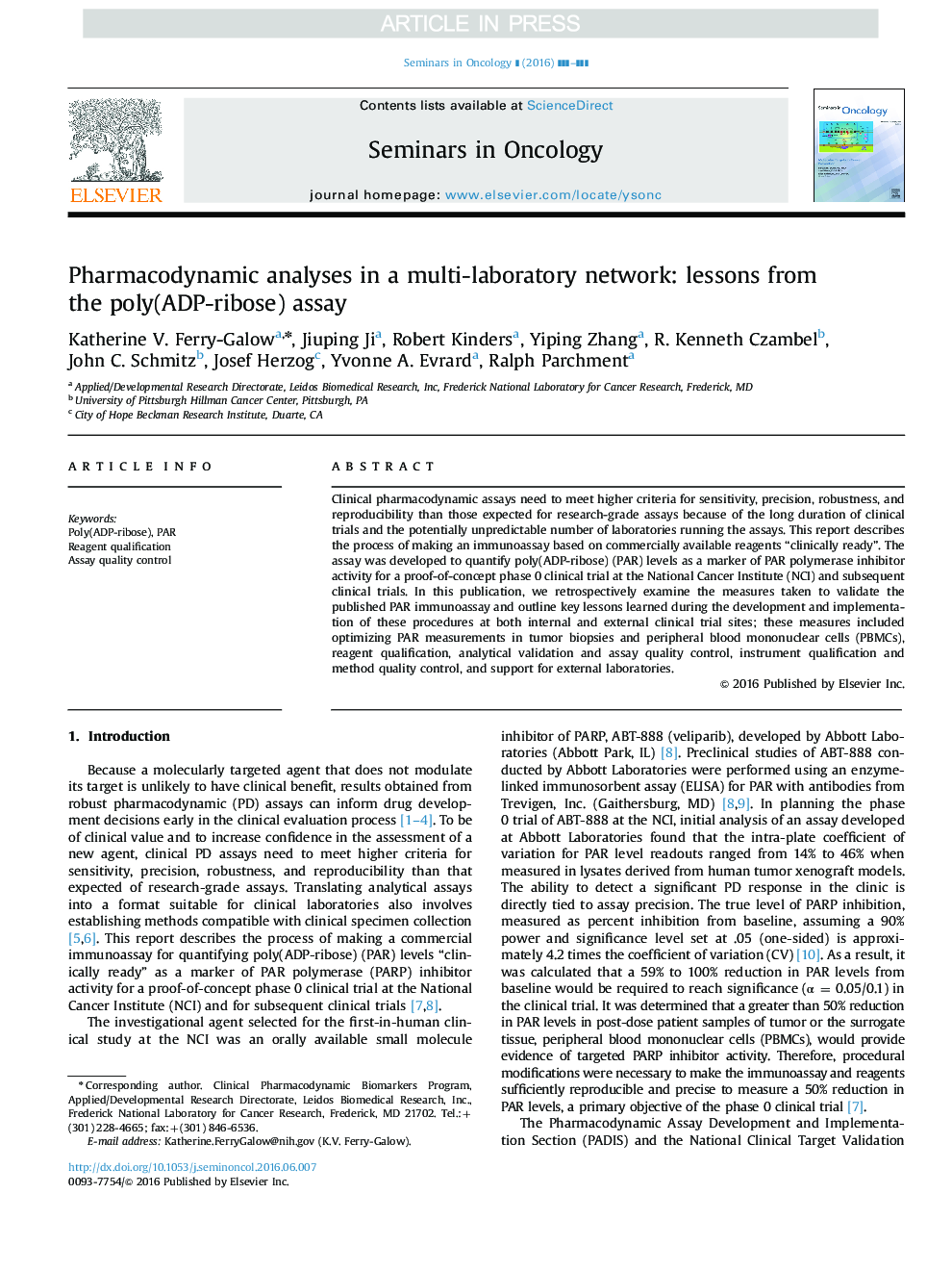| Article ID | Journal | Published Year | Pages | File Type |
|---|---|---|---|---|
| 5530254 | Seminars in Oncology | 2016 | 9 Pages |
Abstract
Clinical pharmacodynamic assays need to meet higher criteria for sensitivity, precision, robustness, and reproducibility than those expected for research-grade assays because of the long duration of clinical trials and the potentially unpredictable number of laboratories running the assays. This report describes the process of making an immunoassay based on commercially available reagents “clinically ready”. The assay was developed to quantify poly(ADP-ribose) (PAR) levels as a marker of PAR polymerase inhibitor activity for a proof-of-concept phase 0 clinical trial at the National Cancer Institute (NCI) and subsequent clinical trials. In this publication, we retrospectively examine the measures taken to validate the published PAR immunoassay and outline key lessons learned during the development and implementation of these procedures at both internal and external clinical trial sites; these measures included optimizing PAR measurements in tumor biopsies and peripheral blood mononuclear cells (PBMCs), reagent qualification, analytical validation and assay quality control, instrument qualification and method quality control, and support for external laboratories.
Related Topics
Life Sciences
Biochemistry, Genetics and Molecular Biology
Cancer Research
Authors
Katherine V. Ferry-Galow, Jiuping Ji, Robert J. Kinders, Yiping Zhang, R. Kenneth Czambel, John C. Schmitz, Josef Herzog, Yvonne A. Evrard, Ralph E. Parchment,
